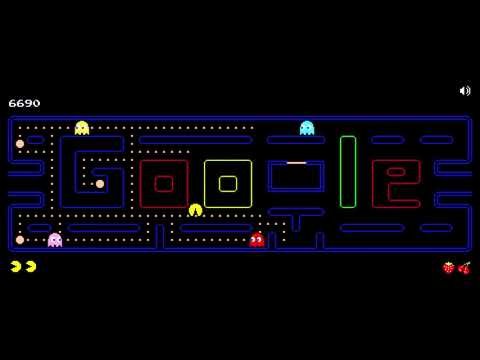Tech
Celebrating a Milestone: Pac-Man’s 30th Anniversary

In the realm of video gaming, few names are as iconic or enduring as Pac-Man. As we mark the 30th anniversary of this legendary game, it’s worth delving into its origins and understanding how it became a cornerstone of arcade gaming culture. Developed by Namco and first released in Japan in 1980, Pac-Man’s journey from a simple concept to a global phenomenon is a tale of innovation, timing, and universal appeal.
The creation of Pac-Man can be credited to game designer Toru Iwatani, who sought to design a game that could attract a wider audience beyond the typical male-dominated gaming community of the late ’70s. Drawing inspiration from a pizza with a slice missing, Iwatani crafted a character and game that eschewed the prevailing themes of space and warfare for something more whimsical and accessible. The titular character, initially named “Puck Man” in Japan, was changed to “Pac-Man” for international releases to prevent defacement of the arcade cabinets.
The Gameplay that Captivated Millions
Pac-Man’s gameplay is a masterclass in simplicity and addictiveness. Players navigate Pac-Man through a maze, consuming dots and avoiding four colorful ghosts – Blinky, Pinky, Inky, and Clyde. The innovation didn’t stop at character design or game objectives; the introduction of power pellets allowed Pac-Man to turn the tables on his pursuers, adding a layer of strategy and excitement that was previously unseen in video games.
This straightforward yet compelling gameplay loop is a significant reason for Pac-Man’s widespread appeal. Its design encouraged players of all ages and skill levels to engage, creating a communal gaming experience that transcended the typical competitive atmosphere of arcades. The game’s success was meteoric, quickly making it a staple in arcades around the world and cementing its place in pop culture.
The Cultural Impact and Legacy
Pac-Man’s influence extends far beyond the confines of the gaming world. Its arrival marked a turning point in popular culture, where a video game character achieved an almost celebrity-like status. Pac-Man merchandise flooded the market, from t-shirts and lunchboxes to an animated television series and hit single “Pac-Man Fever” by Buckner & Garcia, which climbed the Billboard charts. The character became an emblem of the ’80s and a nostalgic touchstone for generations that grew up during its heyday.
The 30th anniversary of Pac-Man is not just a celebration of a game but a homage to the birth of an era where video games began to significantly influence entertainment and social dynamics. The anniversary is commemorated through various mediums, including re-releases, special editions, and even Google’s interactive doodle, allowing a new generation to experience the charm of the original game.
Technological and Design Innovations
Pac-Man also stands as a testament to the technological and design innovations of its time. The game’s AI, particularly the unique behaviors programmed for each of the ghosts, was a groundbreaking feature. These behaviors added depth to the game, making each playthrough slightly different and requiring players to adapt their strategies. The game’s maze design, sound effects, and character animations were also cutting-edge, contributing to an immersive and engaging experience.
The design philosophy behind Pac-Man, focusing on accessibility and enjoyment over complexity, has influenced countless games since. It demonstrated that video games could be more than just digital pastimes; they could be universal experiences that resonate with a broad audience.
Looking Forward
As we celebrate the 30th anniversary of Pac-Man, it’s essential to look forward, recognizing the game’s enduring legacy in the ever-evolving landscape of video gaming. The simplicity and charm of Pac-Man continue to inspire game developers, reminding them of the power of intuitive design and universal appeal. The game’s journey from a pixelated maze runner to a cultural icon underscores the potential of video games to transcend their electronic origins and become a significant part of our cultural tapestry.
Pac-Man’s 30th anniversary is not just a milestone for the game itself but a celebration for the gaming community and pop culture at large. It serves as a reminder of the humble beginnings of the video gaming industry and its incredible journey over the past three decades. As we commemorate this landmark anniversary, we look forward to the future, eager to see how the legacy of Pac-Man will continue to influence and shape the world of entertainment and beyond.
Frequently Asked Questions about Pac-Man’s 30th Anniversary
1. What is Pac-Man’s 30th anniversary?
Pac-Man’s 30th anniversary celebrates three decades since the original release of the Pac-Man arcade game. Developed by Namco, the game was first introduced in Japan in 1980 and quickly became a global phenomenon.
2. Why is Pac-Man so significant in video game history?
Pac-Man is considered a landmark in video game history due to its massive popularity, innovative gameplay, and its role in expanding the video game market beyond traditional audiences. It introduced unique game mechanics, character-based design, and became a cultural icon of the 1980s.
3. How was Pac-Man created?
Pac-Man was created by game designer Toru Iwatani of Namco. The inspiration for Pac-Man’s design is rumored to have come from the image of a pizza with a slice missing. Iwatani aimed to create a game that could appeal to both genders and all ages, focusing on a non-violent theme that stood out from the space-invader games popular at the time.


















